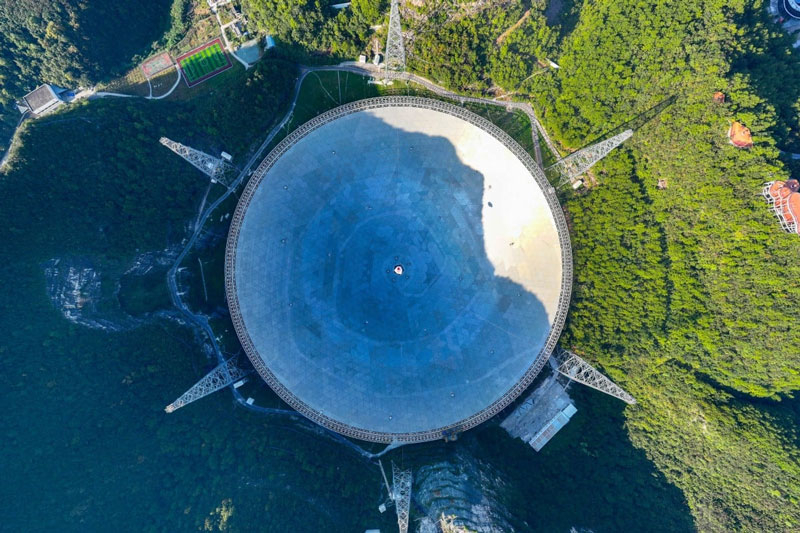Having completed the construction of the FAST radio telescope in 2016 with a solid “dish” with a diameter of 500 m, China received the world’s best instrument for observing the Universe in the radio range. After the destruction of the 300-m Arecibo radio telescope in Puerto Rico in 2020, the Chinese instrument became virtually the only large radio telescope with a continuous aperture. Now China has begun upgrading FAST, which will make it much more sensitive.

Image Source: SCMP
To increase the resolution of FAST (Five-hundred-meter Aperture Spherical Telescope) – “A spherical telescope with a five-hundred-meter aperture”, 24 radio telescopes will be built around it, each with a 40-m solid antenna. The entire complex of antennas, including the 500th, will operate synchronously, representing a virtual radio antenna with a diameter of about 10 km. The resolution of the complex will be 30 times higher than that of the basic FAST radio telescope. China will become a leader in observational radio astronomy, which will be very, very difficult to catch up with.
Only the Event Horizon Radio Telescope can surpass FAST. This is a network of radio telescopes scattered throughout the Earth and owned by several countries, thanks to which the first direct images of a black hole (M87*) were obtained in 2018. To compile the data, each of the observatories recorded terabytes of information that could only be transported to one location by plane for processing. This allows us to imagine how enormous the capacity the upgraded FAST complex will have in order to quickly process the results of collective observations.
The radio telescope will allow scientists to study events related to the evolution of black holes, the formation and evolution of galaxies, dark matter, explore objects of the reionization era and solve a wide range of other scientific problems. This tool is available for scientists from other countries to submit research applications, which will make a significant step forward not only for China, but also for world science.